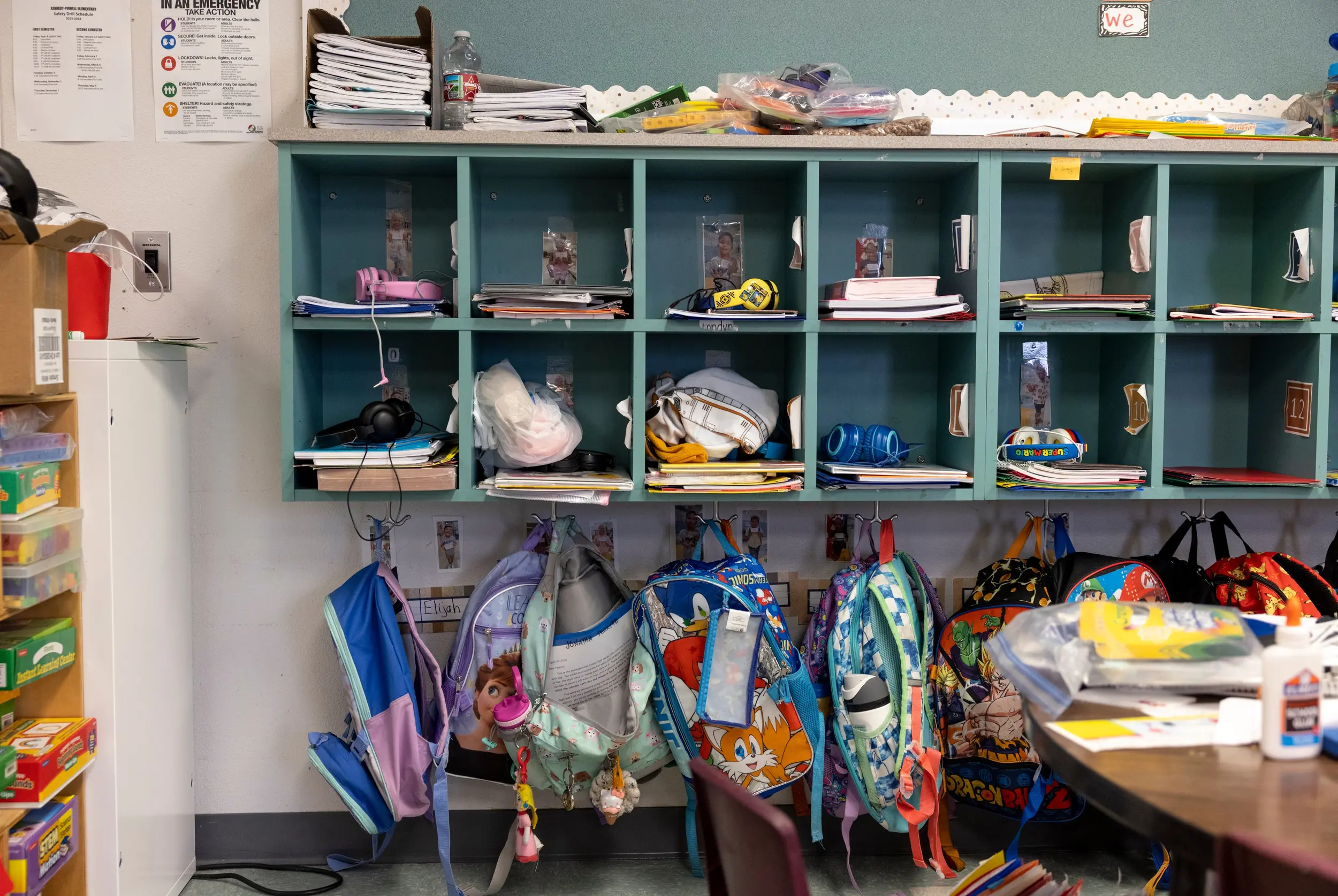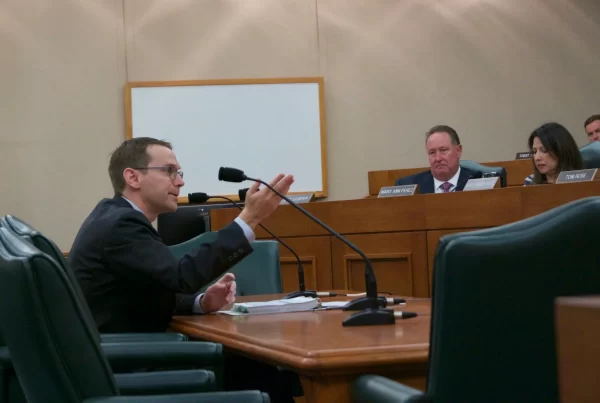Charter schools are tuition-free, publicly funded schools operated by nonprofit organizations. Charter schools operate under statewide academic and financial accounting standards, but differ from public school districts in their governance, pedagogy, and financing.
Charter schools are regulated by the Texas Education Agency (TEA). Each charter school operates under a contract (charter) with TEA, or with a local school district.
Charter schools in Texas enrolled 443,000 students in 2021-22, accounting for 8.2% of the state public school population, according to TEA data. 377,000 students enrolled at state-authorized charters, and 65,000 enrolled at district-authorized charters.
Advertisement
Charter Schools vs Public Schools
Traditional public schools in Texas are operated by units of local government called independent school districts. Charter schools differ from these public schools in key ways:
- Governance and Management: Public schools are controlled by local school districts and overseen by elected boards of trustees. Charter schools are independently run nonprofits but publicly funded.
- Teacher Certification: Public school teachers must hold state certification with specific qualifications. Charter school teachers are not required to be certified, except special education and bilingual teachers.
- Uniforms: Some charter schools require uniforms, whereas most public school districts do not.
- School Choice: Many public schools are only open to students who live within certain geographic boundaries. Charter schools are open to all students, regardless of their place of residence.
- Special Education: Public schools generally have more resources and staff for special education services.
- Extracurricular Activities: Public schools typically offer a broad range of extracurricular activities due to larger student populations and greater funding. Charters may offer fewer extracurriculars but could specialize in certain areas.
- Class Size: Public elementary schools have a maximum class size of 22 students. Charter schools are not subject to this limit.
- Facilities and Infrastructure: Public schools are housed in district-owned buildings. Charter schools often rent space.
- School Day and Year Length: Public schools must adhere to state rules for the length of the school day and the academic year (usually 180 days). Charter schools have more flexibility in structuring the school day and year.
- Curriculum Flexibility: Public schools follow state-mandated curriculum (TEKS). Charter schools are subject to some, but not all, of the curriculum requirements that apply to independent school districts.
- Teacher Unions: Many public school teachers in Texas belong to unions that negotiate salaries and benefits. Charter schools generally do not have teacher unions.
Admission and Enrollment
Enrolling a child in a Texas charter school is a two-step process: application for admission and then enrollment in the charter school. Application for admission is completed using the statewide common admission application, known as the Charter Student Admission Application (CSAA).

At the conclusion of the admission window, if more students have applied to the charter school than can be accommodated, a charter school must allocate spaces through a lottery process or fill available positions in the order in which applications were received.
Once students are selected for the available positions, the enrollment process begins. If the parent/guardian accepts the available position, schools may request additional information including the student’s health records, academic records, verification of address, and in some instances, discipline records.
A charter school’s admissions policy may not discriminate against students on the basis of sex, national origin, ethnicity, religion, disability, academic, artistic, or athletic ability, or the independent school district the child would otherwise attend. However, students enrolled in a charter school must live in the approved geographic boundary of the school.
Funding of Charter Schools
Texas charter schools receive state funding based on the number of students who attend the school. Under Texas law, all students are entitled to a basic allotment to fund their public education. In the 2019-20 school year, this basic allotment was $6,160. The law then provides for additional funding allotments, most of which account for the extra resources and effort required to support “special populations” such as low income students, students with disabilities, and English language learners.
Unlike independent school districts, which are funded in part by local property taxes, charter schools receive no local tax dollars and are entirely funded by the state. On average, charter schools receive less funding per pupil than ISDs, according to data from the Texas Education Agency. However, this varies by school, with charter schools that serve more high-needs students sometimes receiving more funding per-pupil than nearby ISD schools.
Governance of Charter Schools
Unlike the independent school districts, which are governed by elected trustees, charter schools are governed by appointed nonprofit boards. Like ISD board meetings, charter school board meetings must be open to the public.
Charter school board members are not paid and cannot have a financial stake in a charter school management company. Charter school boards are separate from the boards of management organizations.
Common Questions and Concerns
Are there for-profit charter schools in Texas?
No. Although for-profit charter schools are allowed in some other states, they are not allowed in Texas. Texas law only allows charter schools to be operated by nonprofit organizations, universities, or governmental entities.
Do charter schools offer transportation?
Most charter schools in Texas do not provide transportation, as they are not required to do so. However, some charter schools may offer limited bus services, particularly if they serve students from specific areas. In general, families are responsible for providing transportation to and from school, unless otherwise stated by the individual charter school.
Can charter schools expel students?
Charter schools in Texas can expel students, but they must follow the same state laws and procedures as public schools. Expulsion can happen for serious misconduct, and the student must have the opportunity for a hearing. Charter schools may not expel a student for failing to perform academically.
How much does it cost to attend a charter school?
Charter schools are free to attend. They do not charge tuition, just like public schools. However, some charter schools charge fees for extracurricular activities or special programs. Additionally, families may be required to purchase a uniform.
What kind of curriculum do charter schools offer?
Charter schools in Texas have the flexibility to create their own curriculum as long as it meets state standards (Texas Essential Knowledge and Skills, or TEKS). Many charter schools focus on specialized programs, such as STEM (Science, Technology, Engineering, and Math), the arts, or bilingual education.
Do charter schools in Texas have sports teams?
Charter schools in Texas generally do not have their own sports teams due to their smaller size and limited funding. However, some charter schools may offer intramural sports or recreational activities. Additionally, some charter schools have arrangements with nearby public school districts, allowing students to participate in sports offered by those districts.
Are charter schools required to provide special education services?
Yes, charter schools in Texas are required to provide special education services for students with disabilities, just like traditional public schools. However, charter schools generally have fewer resources or specialized staff compared to larger public districts, which can impact the availability of services.



